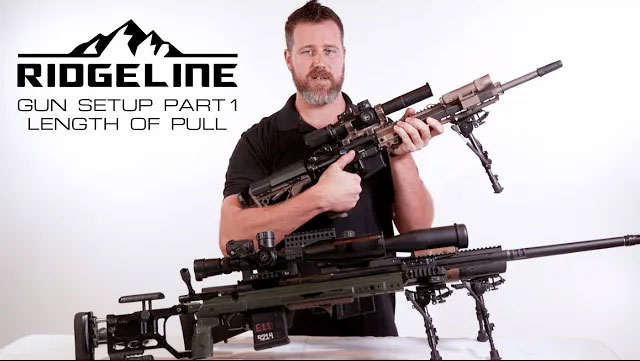
Part 1 – Length of Pull
When it comes to shooting Precision Rifles probably one of the most overlooked aspects is proper gun set up. Strangely enough its sometimes one of the easiest and most economical aspects a shooter can correct in terms of accuracy and precision gained per dollar and time spent. What follows is a step-by-step tutorial regarding precision rifle gun set up, keep in mind that everyone’s body is different, everyone’s equipment may vary and everyone’s purpose is subjective to their own needs.
That being said, the methods outlined in this guide have been tried and true over the course of hundreds of classes and thousands of students and should get you pretty stinking close. You may be reading this and come across parts and think “Oh, that probably doesn’t apply to me.” I’d encourage you for your own sake, to stuff that ego out of the way for a minute. While yes, there are always exceptions to the rules (trust me if you teach this stuff long enough, you’ll see exceptions to everything) but chances are, if you think you’re exceptional…you’re probably not.
Lastly some of you are going to find out that you are financially and emotionally invested into equipment just can’t do what it needs to do. This sucks, and I hate being the one to break the news to you but sometimes the answer is going to be found in your check book. There is nothing more painful than watching defiant shooters launch dollar bill, after dollar bill down range in what appears to be an act of self-spite because they won’t spend the money to fix themselves. If you truly want to succeed, sometimes just taking some time and saving up your pennies for the right option is the greatest act of self-love.
Length of Pull
First stop on precision rifle set up is going to be setting the rifles length of pull. “Length of pull” is in the simplest terms, the length of the rifle from the butt of the rifle (or the end of the stock), as it rests in the shoulder pocket, to the trigger finger as it rests naturally in a perpendicular fashion on the trigger. Sounds simple enough right? Yet if we screw this portion up it has a cascading effect of problems that are going to prevent us from being able to properly interface with the rifle, so let’s take a how to avoid that.
One of first big issues we see with setting the length of pull is most shooters have improper body position and while we are mainly discussing prone, these fundamentals apply across all positions. All too often we see shooters get behind the rifle and “blading” off their shoulders and body in what I refer to as the “little green army man pose”. This body position has its roots grounded in the traditional NRA High-power/Service Rifle style shooting but it places some hard limitations on practical use for the modern precision rifleman.

Simply put most of us are not slinging into 18lbs .223s and gluing ourselves to a shooting mat, so that we can slow fire 1 round a minute, across the golf course, with wind flags, at large, high contrast targets. Instead, the modern rifleman, whether a match shooter or professional tactical shooter, often must contend with shooting engagements that require shooters to quickly assume positions that provide not only stability but also durability and sustainably through the recoil impulse(s). Thus, the proper body position (prone) around which we will build the length of pull is shown here.
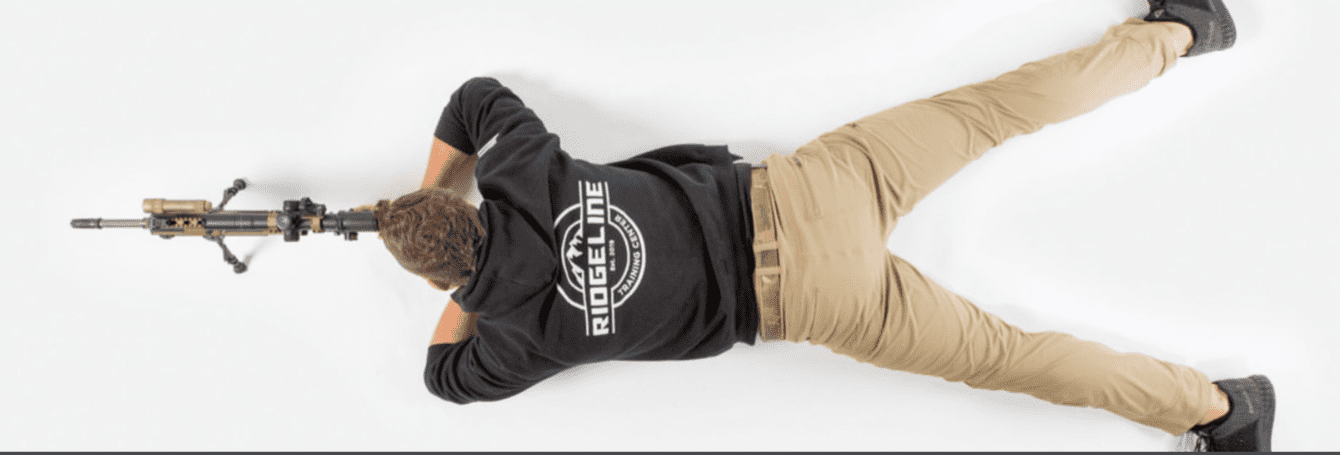
The shoulders are mostly squared to the gun/target line. The spine runs parallel to the bore line. Feet and legs are extended out naturally, with toes out and heels down. This provides not only a stable body position but also allows quick and easy adjustments to the nature point of aim, as well as placing the mass of the shooters body to absorb and dissipate the recoil impulse in a symmetrical fashion that provides the shooters natural point of aim the necessary durability and sustainably through the recoil impulse(s).
Armed with an understanding of what proper body position is, let us return to the question at hand, How to properly set the length of pull? As rules go generally, the larger you are the longer your length of pull will be. Average lengths of pull vary from rifle to rifle but for most adults you’ll probably be in the typically range from 12.5” on the short end up to 14”. At 6’5” 240lbs, I run right around 13.25” 13.5”, here is a picture of three different rifles I own. As you can see the length of pull changes very little from one platform to another.


Ultimately the length of pull that is going to fit you best is going to be determined by your individual proportions. The quickest method to achieve a proper length of pull is to follow the “Rudy’s Rule” of 90/90. Simply measure from the crook of your elbow opened to 90 degrees, to the trigger finger as it rests, opened to 90 degrees perpendicular across the trigger.
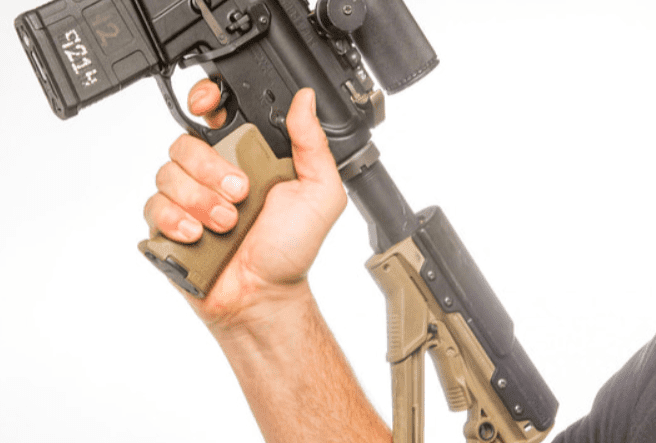
As seen in the picture the whole goal of the properly set length of pull is to allow the trigger finger to rest naturally perpendicular to the trigger, when the rifle is placed in the shoulder pocket of a shooter, assuming a fundamentally sound body position.
But what if it is not?
Unfortunately some of us are going to find that our rifles length of pull don’t fit us. Generally, I will say if you can get within ½ inch or so of your correct length of pull, you’ll still be alright. But here is what happens when you’re too long.
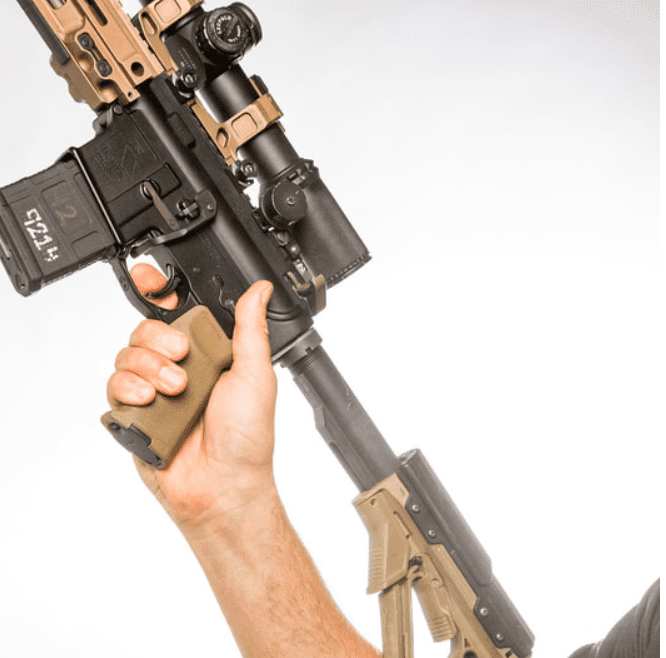
Here we have the too long of a length of pull example. Biggest thing to see here is the trigger finger begins to “blade” off the trigger at a non-perpendicular angle, which means as you begin to try and press the trigger straight and to the rear, you stand a pretty good chance of inducing lateral movement into the rifle. Additional excessive length of pulls usually compromise the head position in relation to the optic and it’s not uncommon to see a shooter begin to blade their body in an attempt to “crawl” up the stock towards the better sight picture. This naturally compromises the durability of the shooters body position when subjected to recoil.
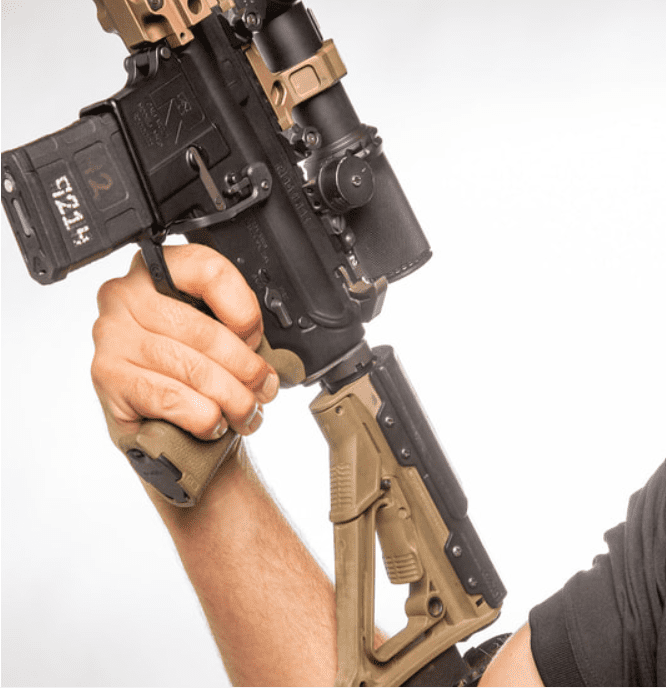
Going in the other direction of too short of a length of pull, we run into a trigger finger beginning to “hook” the trigger at a non-perpendicular angle. Which just like having too long of a length of pull we can’t really press that trigger cleanly, straight and to the rear. Additional too short length of pulls usually compromise the head position in relation to the optic and it’s not uncommon to see a shooter begin to kink their neck back in an attempt to “crawl” back along the stock away from the optic towards the better sight picture. This naturally compromises the sustainability of the shooters body position as it quickly causes shooter fatigue.
The Fix
So the crux of the problem is now what to do if your rifle doesn’t have a proper length of pull. If you have a rifle with an adjustable length of pull then the simplest part is to place the rifle in the crook of you elbow and extend or shorten the length of pull until the trigger finger rest perpendicular on the trigger. Most AR15s/SR25s with the carbine buttstocks are a quick click, fixed stock rifles are best upgraded to something along the lines of the Magpul PRS. There are a couple of other similar options to the Magpul but to be honest, of all the options I’ve used/seen, it’s the most rugged.
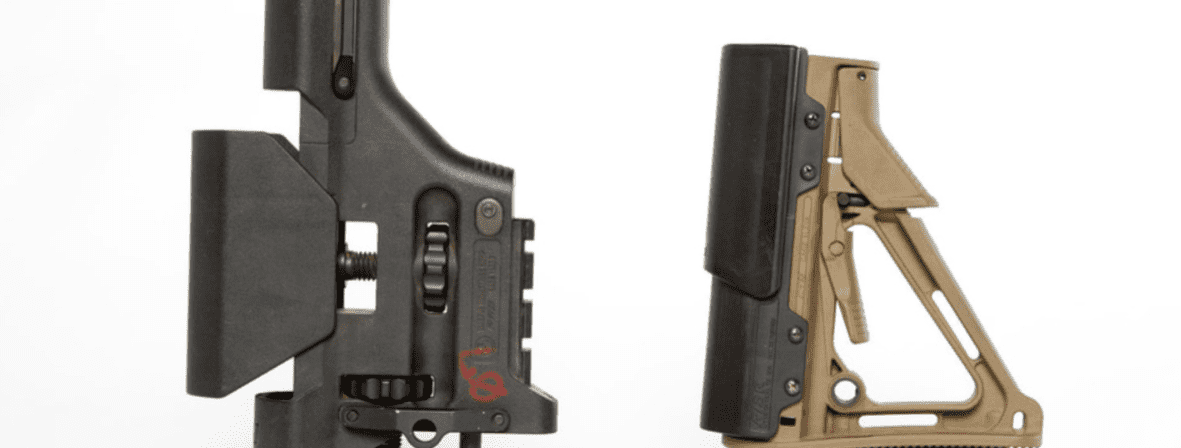
Likewise most modern rifle chassis will allow for easy adjustments as well. On traditional style rifle stocks, you may find this length of pull adjustment more difficult, if the stock doesn’t have the dedicated hardware. If too long of a length of pull is present, then material must be removed in order to facilitate a proper fit and I’ll be honest for most of us this is something best left to a gunsmith. Additionally, the too short length of pull, needs to be corrected with the addition of material. While there are a variety of aftermarket add on options, cheaper options like the “Limb Saver”, have a tendency to not stay put under any real shooting schedule…ask me how I know.
If You found this segment useful, stay tuned for the next post:


